If you don't like cilantro, close your browser right now, back away from the computer slowly and I'll see you next week. If you love cilantro like I do, hang on to your butt, because I have a great one for you.
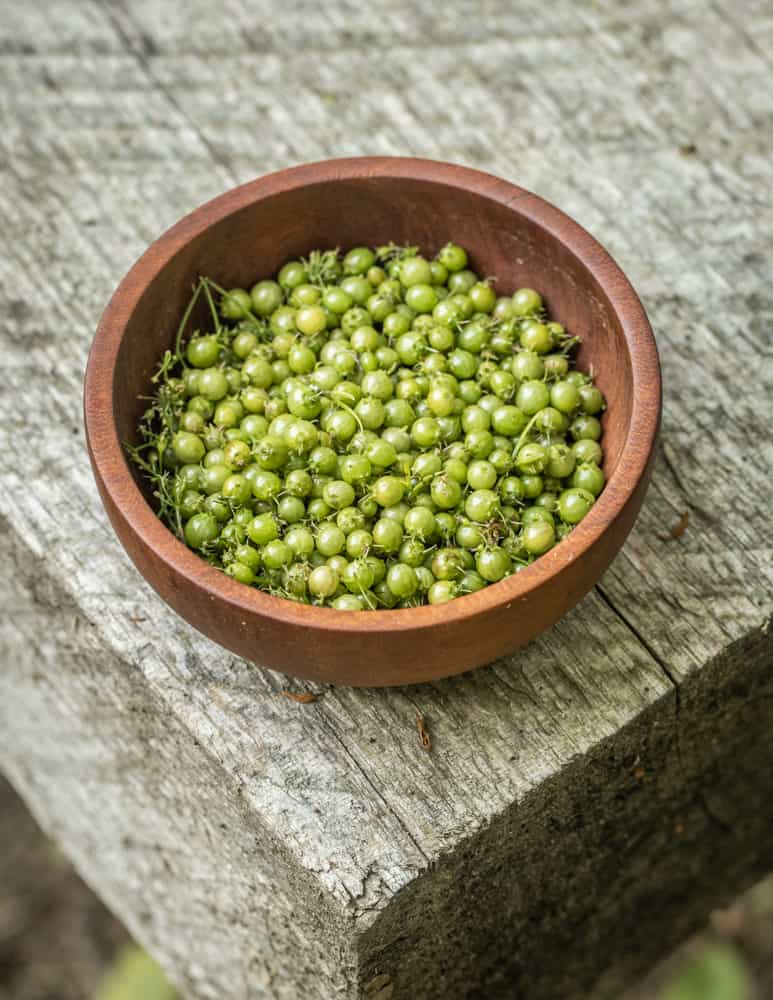
Green / unripe coriander or cilantro seeds are one of my all-time favorite, hyper-seasonal harvests, and a secret ingredient chefs have been using and requesting from suppliers for years.

Most of the time when we think of cilantro / coriander (Coriandrum sativum), we think of leaves that come in a bunch (these are actually the basal leaves, which are different tasting from the frilly, carrot-esque leaves that creep up the flower stalk). But cilantro is so much more.
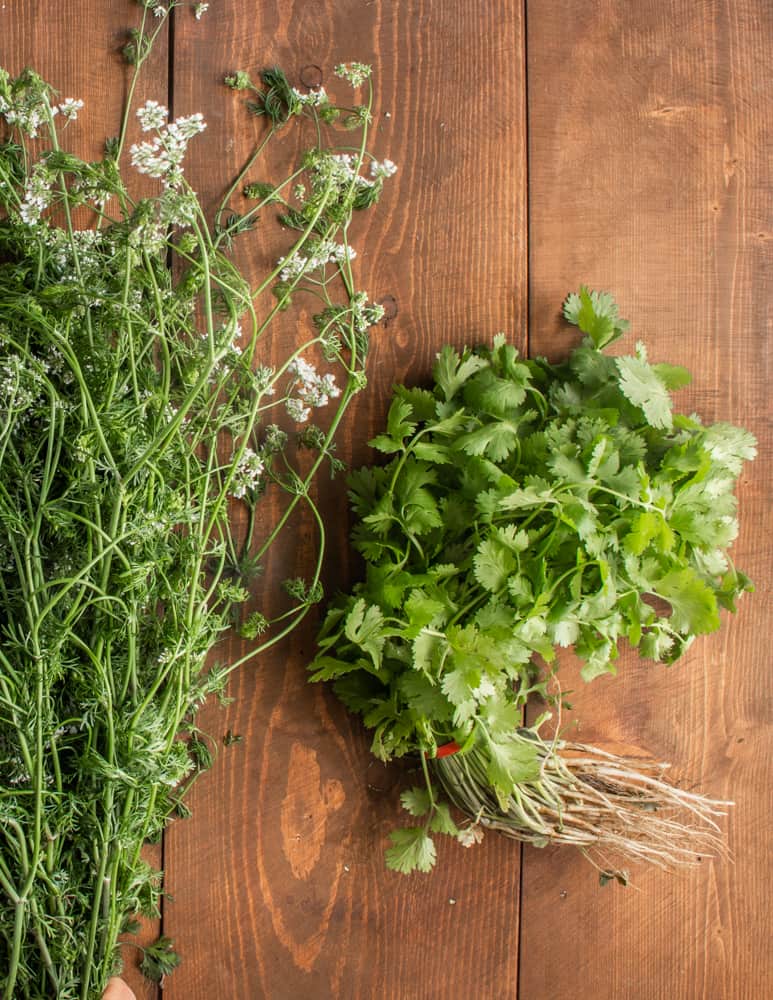
Same cilantro: two different flavors
Real quick here, I want to go over the leaves for a moment. The basal leaves of cilantro are mild tasting, and, from my experience, preferred by Caucasians. The leaves that creep up the flower stalk have a much more piercing flavor and aroma (I can only assume the intensification of aroma is to attract pollinators as the plant begins the process of flowering and making seeds) and are typically sold by Asian markets and Hmong farmers at the farmers markets I go to.

When I've asked the caucasian growers why they don't sell bolted cilantro like the Hmong farmers, they tell me it's not the right way to sell it. When I ask the Hmong farmers why they don't sell basal leaves, they say basically the same thing. The way I see it, both growers are correct. Cilantro is great no matter when it's harvested, and both growers are catering to their respective markets. The cultural predilections for leaves of differing ages/flavors is definitely a thing here, and it's an interesting curiosity that makes me chuckle.
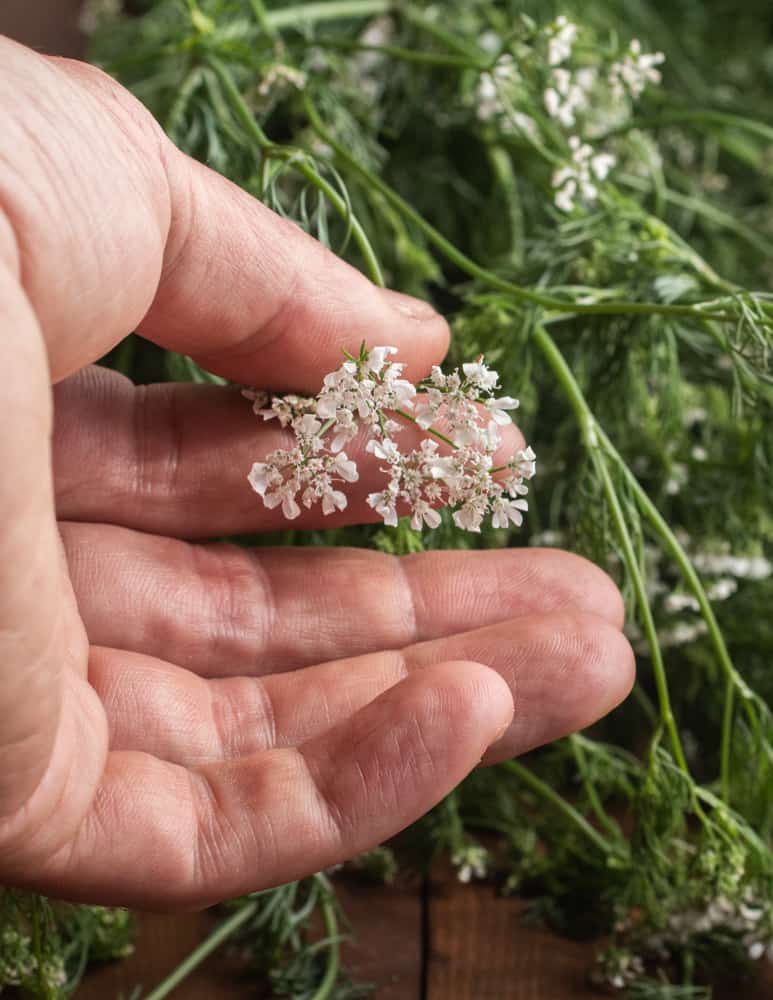
Personally, I use both leaves depending on the age of the plants and how much of the herb I need, but, if I was pressed, I'd say I prefer the aggressive taste of maturing cilantro leaves from the flower stalks. That being said, it's more difficult to get the smaller, frilly leaves en-masse than the abundant basal leaves that come with their bonus of tender stems.

After the plant makes flowers (also delicious) it begins making seeds, which, after maturing and drying, are the bright-tasting, citrusy spice coriander we all know and love.
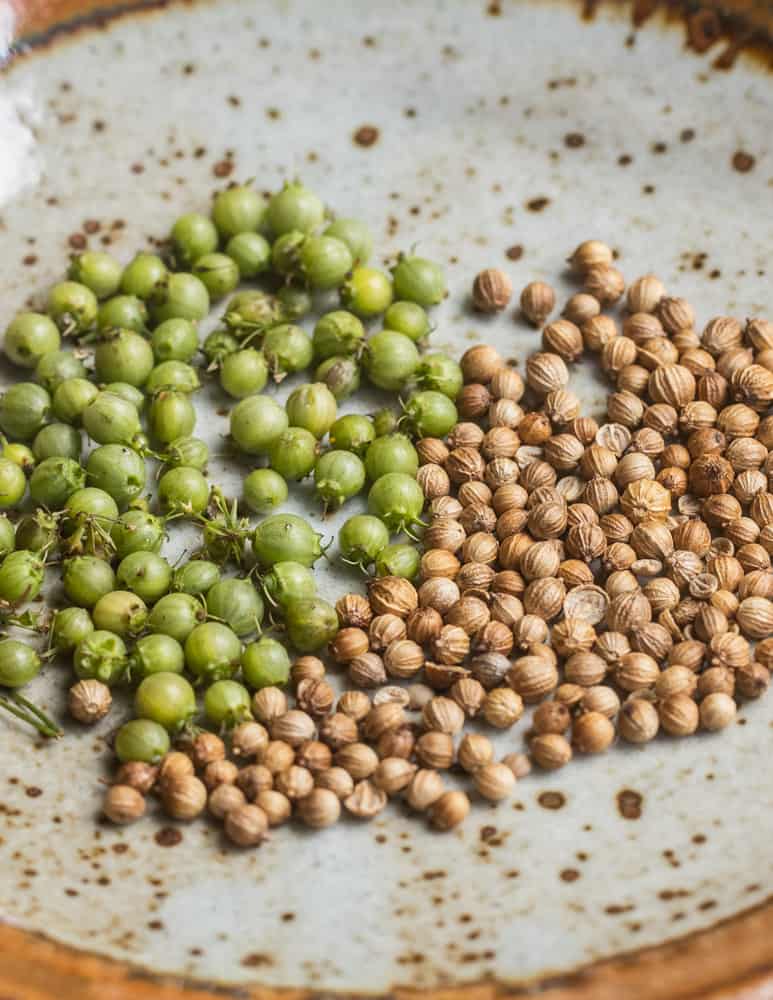
Like so many other herbs (wild Szechuan peppercorns being a perfect example) if you harvest the seeds unripe and green, before the seeds have matured and dried, you can cook with them, and they're fantastic.
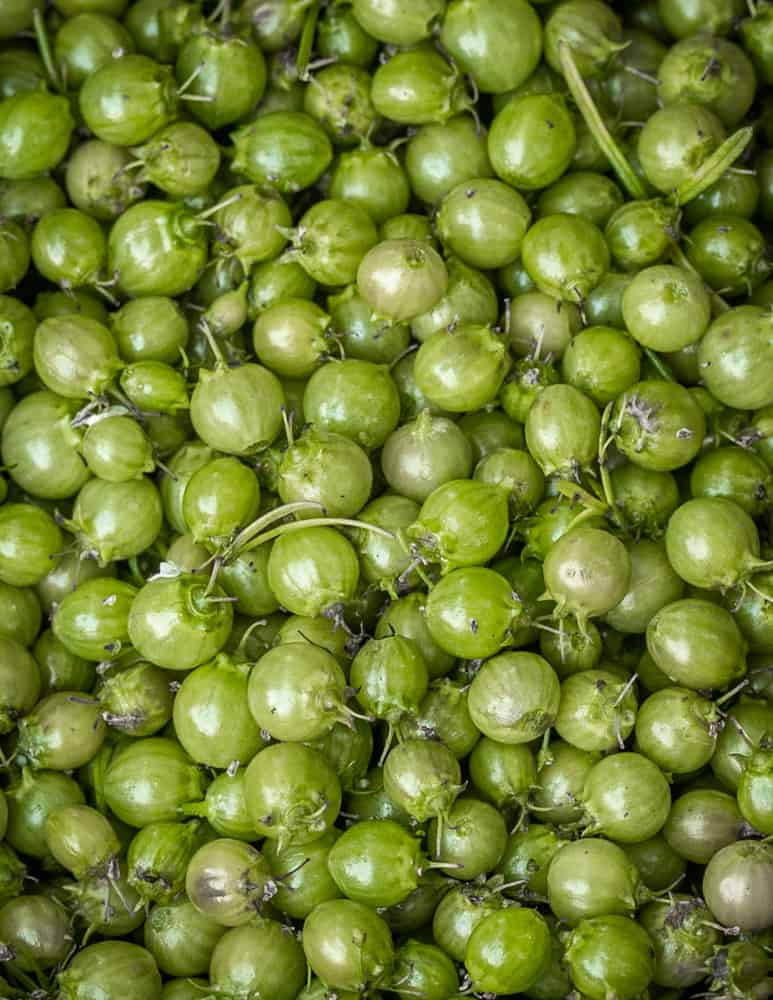
For a little technical clarification here, when I say green coriander or unripe coriander seeds, I'm not actually talking about the seeds. What the aroma is concentrated in, and what you will use in cooking, are the aromatic green husks surrounding the unripe seed.
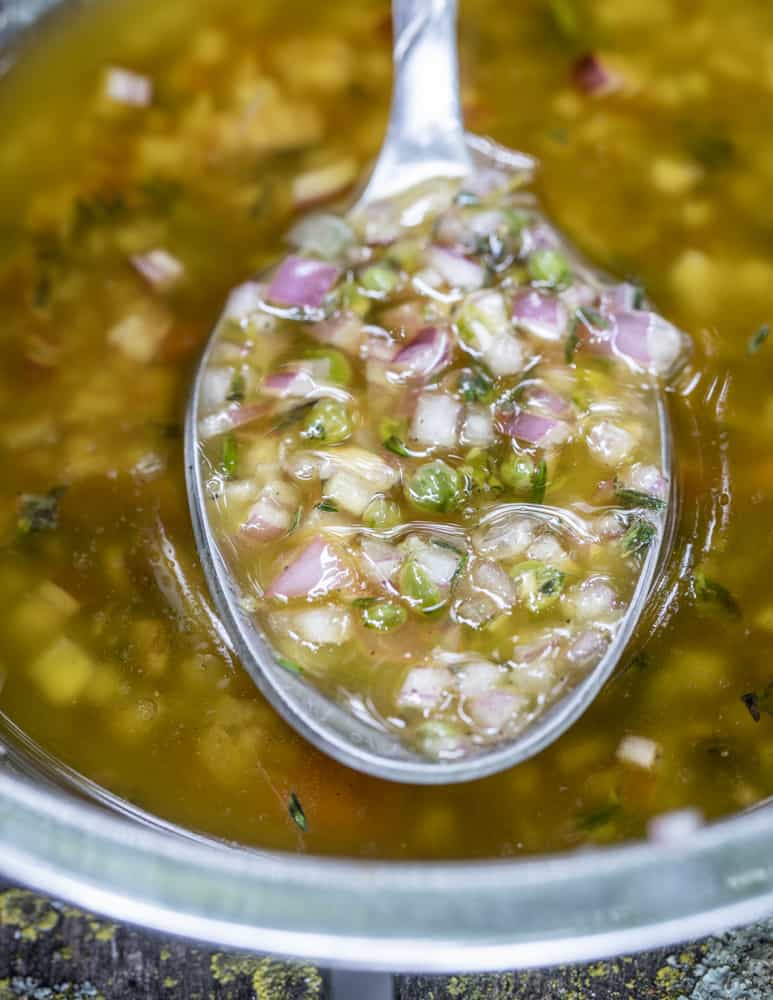
The seeds have an intense, floral aroma that's a bit like a cross between conventional dried coriander seed and cilantro, but it's really something else. The bright aroma and flavor are intense, almost electric tasting to me, and have a similar piercing aroma in the way that fresh lovage does. Just handling a few unripe seeds will leave the aroma on your hands, and fill a room with their scent.
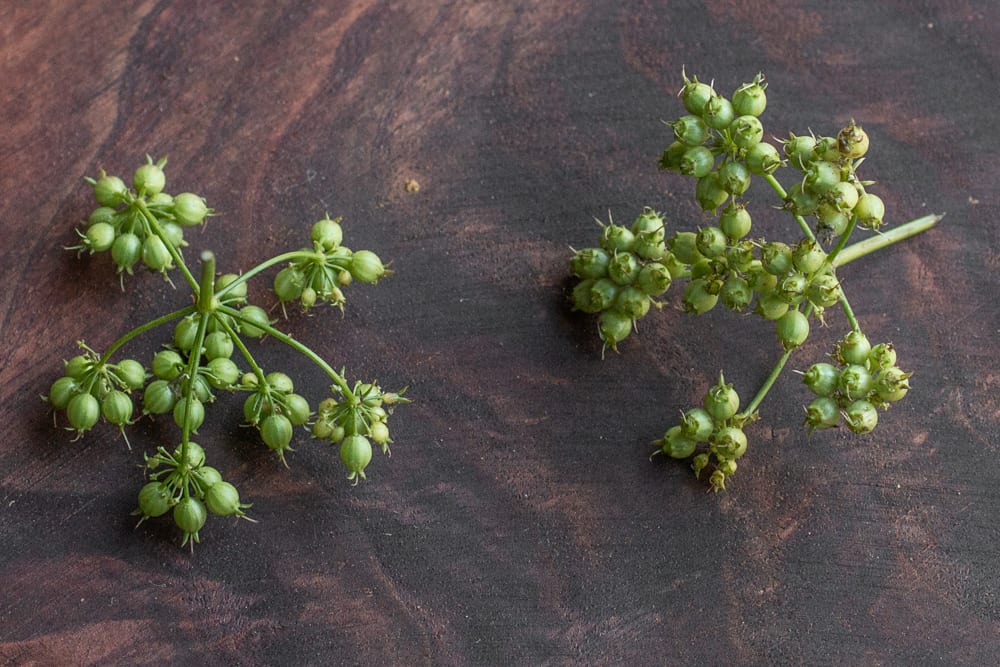
Some people may find the seeds slightly bitter eating them out of hand, but, remember that you wouldn't eat a sprig of rosemary raw either. Any hint of bitterness will dissipate when the seeds are combined with other ingredients, all you'll notice is a bright, aromatic pop here and there.
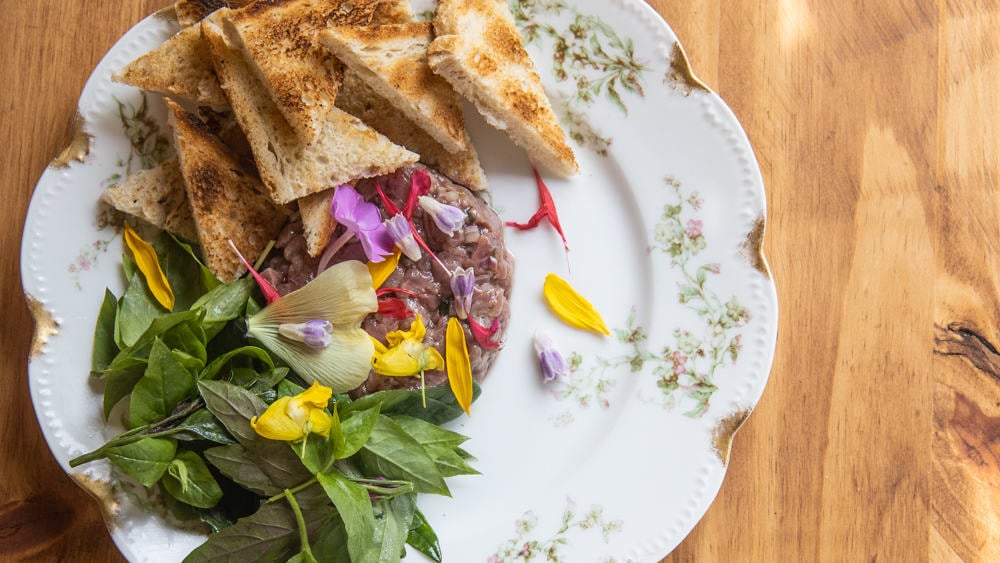
Cooking
Unripe coriander seeds aren't as easy to use as buying a bunch of cilantro, but you only need a few of them to flavor a dish. As they're round, they naturally want to roll all over your cutting board, so it's helpful to crush them with the back of a chef's knife or other flat blade (a bench knife can work) or crush them up in a molcajete (a smooth mortar and pestle is not as efficient). After you mush the seeds and husks up a bit, you can chop them roughly and add them to whatever you like.
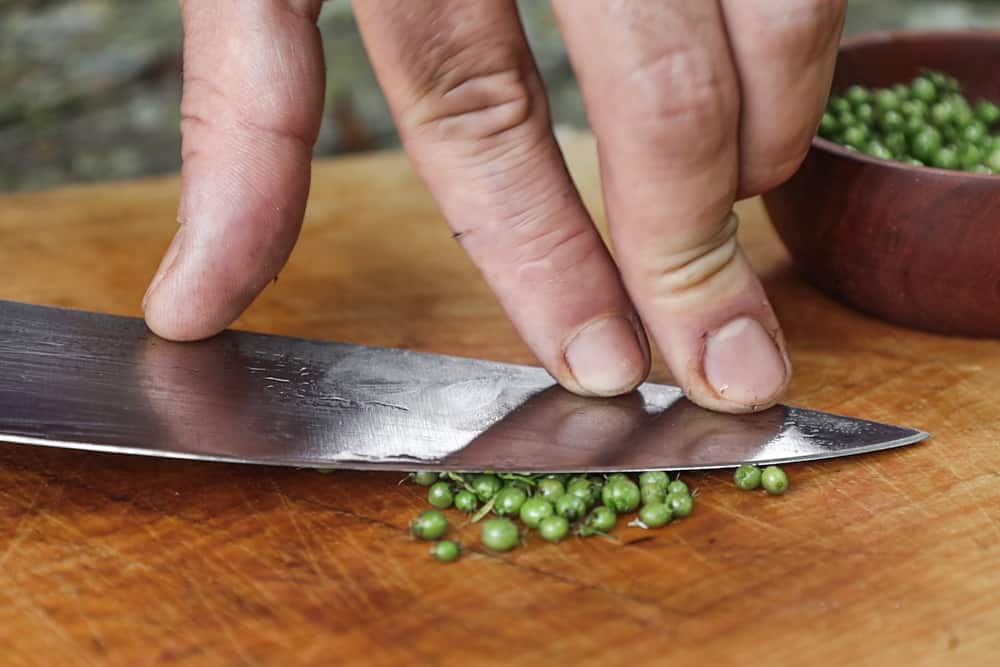
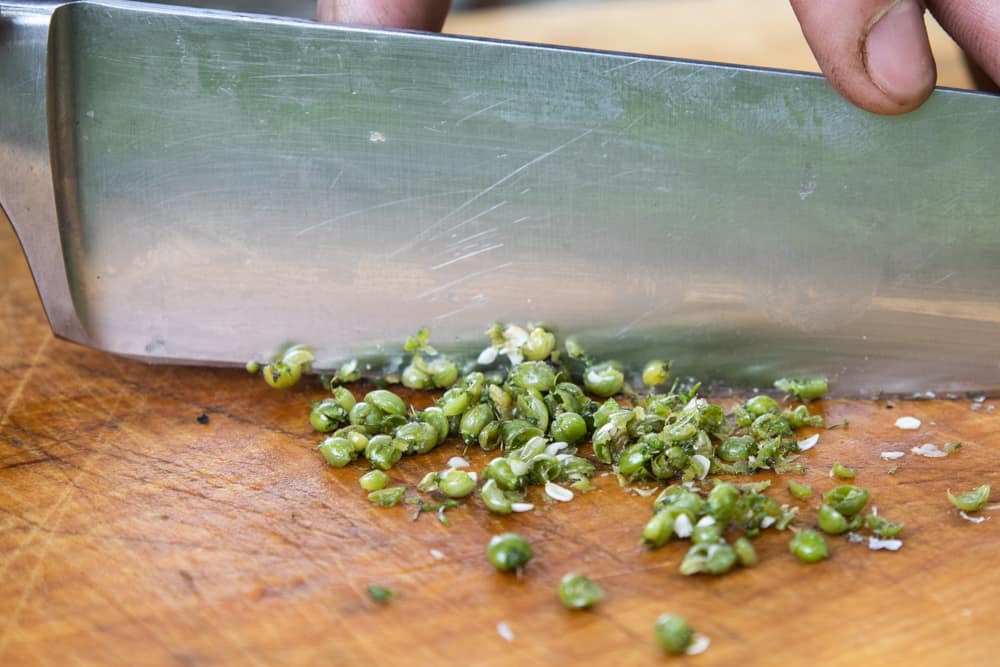

Fresh seeds, like cilantro leaves, should be stored in the fridge, but, unlike the delicate leaves, they can last for weeks. To preserve them you can put the green seeds in a jar in the freezer, which is probably the best way to keep their fresh flavor, but they can also be fermented in brine to preserve them, which gives a slightly different end product.
Whatever you do, I hope you give green coriander a try. The small amount of work it takes to gather them is well worth the effort.
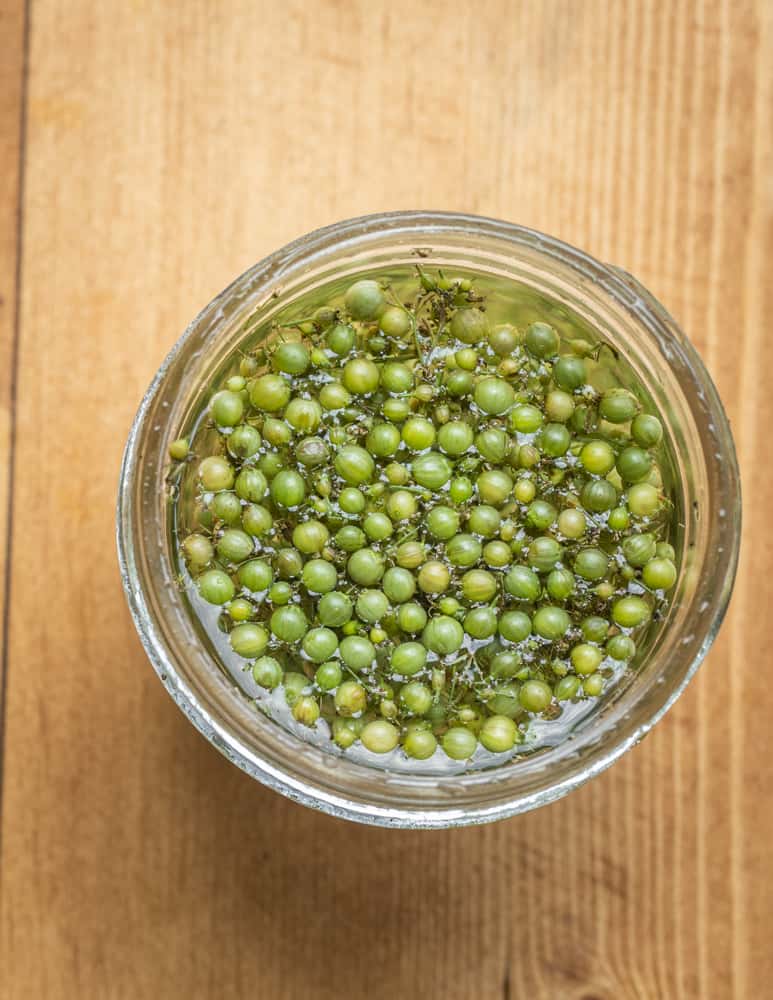
Use Ideas
- SALSA. Add chopped green coriander to taste for some extra punch, for a flavor bomb, add the seeds whole
- Mayonnaise based dressings, dips and sauces
- With any raw fish, crudo, sushi, and tartare
- They're fantastic pureed into a simple herb sauce like Italian Salsa Verde (you can use my recipe here as a guide, use a tablespoon to start)
- Ferment them in brine (see method below) then add the seeds whole to dishes and sauces
- Use them to flavor other things, especially liquid, as in pickles and brines. For example, you might crush a small handful of green coriander to release it's aroma and add to lacto-fermented pickles, or cooked pickle brine as you would seed heads of dill.
- If you have The Forager Chef's Book of Flora, the Bergamot Charmoula calls for green coriander as an optional ingredient, and is a great way to use them.
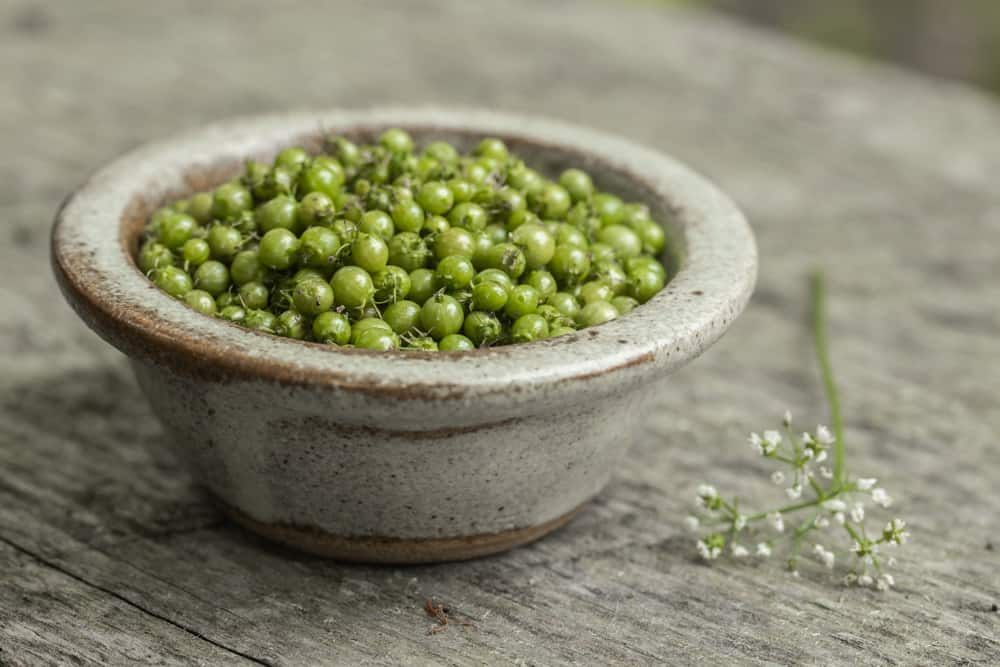
Corn Salsa with Monarda and Green Coriander
Ingredients
- 8 ears of fresh sweet corn in the husk (or 4 cups of kernals cut from the cob)
- 1 large red bell pepper
- 1 large jalapeno
- 1 tablespoon roughly chopped fresh wild bergamot or fresh oregano-to taste
- 1-2 tablespoons green coriander seeds to taste
- 1 teaspoon kosher salt
- 3 Tablespoons Smudes sunflower oil optional
- Small handful of cilantro roughly chopped
- 1 bunch 2 oz of scallions, tender green and white parts only, thinly sliced
- 1 large lime
Instructions
- Roast the pepper and jalapeno over a flame, a grill, or gas burner until blackened all over, then transfer to a container with a lid or a zip top bag, seal, and allow to cool and steam, which helps the skin release. Remove the skin and seeds from the pepper and chop medium-fine or dice. Repeat with the jalapeno, wearing gloves to prevent unfortunate after burns.
- Cut the corn from the cob and reserve.
- Crush the green coriander with the back of a knife to release their aroma, then chop fine. Combine all ingredients in a large bowl and mix well.
- Roll the lime on a cutting board a bit to break the capillaries and help it juice. Scrape a few gratings of lime zest into the corn, then cut in half and squeeze the juice into the salsa.
- Double check the seasoning for salt, pepper, coriander, herbs, spiciness and lime, adjust as needed until it tastes great, then refrigerate until needed.
Notes
Fermented Green Coriander
Ingredients
- ½ cup (50 grams) green coriander This is a scant half cup
- ½ cup (120 grams) filtered water
- 1 teaspoon (5 grams) kosher salt this is 3% of the total weight of water and green coriander, you could also use brine with a concentration of 2-5% salt.
- 1 small grape leaf (optional, this is mostly to help prevent Kahm yeast)
Instructions
- Combine the green coriander, grape leaf if using, salt and water and put in a glass pint jar with a lid.
- Shake the jar to dissolve the salt.
- Allow the green coriander to ferment, covered, for 1-2 weeks, shaking the jar occasionally and opening it here and there a few times during the process to release carbon dioxide.
- After a week, taste the green coriander to judge if the flavor is sour to your liking, when it is, you can refrigerate it to slow the fermentation, or keep it out at room temperature, where it will continue to sour. Add them anywhere you would use green coriander. They're fun to add to things whole for a pop of flavor.


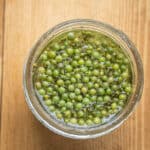
Carmen
How long do they last in the freezer? Thanks!
Alan Bergo
A long time.
Chris
Alan, I planted waaaay to many cilantro seeds this spring. While the basal leaves were welcome, our zone 6b soil quickly grew too warm in early summer so they bolted. I Googled green cilantro seeds and quickly fell in love with your two recipes. Today I harvested 120g of seeds, my home and hands still reek of pulling the seeds from the panicles. I'm fermenting them, tonight is day 0.
Thank you very much for very resourceful and awesome recipes plus your blogging. If you're ever in the Appalachian mountains of NE TN, many forage for all kinds of fungi and flora from morels, chanterelles, lobsterized, hens of the wood, fiddleheads and ramps. Just come at the right time!
Alan Bergo
Hey thanks Chris, glad you could get some. I just had my first harvest of them at my new house. They're such a great ingredient.
Myra Lynn Adams
This is the first year I let my cilantro go to seed. Headed out now to harvest the seeds and I can't wait to try these recipes! I have a fermentation jar that I have never used. Can I process the green seeds in that? I am new to "fermentation " but have been canning and preserving for 60 years, and have only done dill pickles using the old family recipe.
Alan Bergo
Hello. You can try to ferment them, or freeze them as-is. There is no substitute for them perfectly fresh though, so I suggest using them right now and enjoying them while you can. You could also add them to salsas that could be water bath canned, and that will preserve the fresh flavor.
Sarah
I enjoy a few green coriander seeds blended with watermelon chunks in a smoothie.
Alan Bergo
A watermelon salad with jalapenos, good feta or chevre and green coriander is great too.
R Jackson
I had just crushed green Coriander seed while sat in the garden and experienced what you describe about the scent on my hands and thought of all the possible uses, I decided to check on the internet that green coriander is safe to use uncooked and cooked - discovered this post and find there is no limit to uses for this plant, thank you! (do you cook the corn for your dish?)
Ros J (UK)
Alan Bergo
Hey R. I added an extra line of copy in the recipe to make sure people know the corn is raw. It's just a simple summer corn salsa. You could grill the corn in or out of the husk as well.
Jennifer Ferris
Oh how lovely!
I grow it for both the early greens, and the flowers (and gather seeds at the end of the summer too)
The flowers are awesome for attracting the right insects to help tackle the bad insects that come to my garden.
I for sure let it bolt for that reason alone. But all the other ways, yeesh, now I think I need a whole bed, of just cilantro!
LOL
Molly B
Thank you so much for spreading the news about this wonder of the cilantro plant. I discovered the green seeds a couple of years ago when I started branching out from regular dilly beans to Thai dilly beans with the green seeds and Thai basil and then went on to start making a lot of Thai Hen of the Woods pickles - the green seeds are a key element and now my favorite part of the plant and as you said, only available for a small window of summer, and as you said keep for weeks in the fridge and freezer!
Alan Bergo
Thanks Molly, yes they're great in pickles.
Andrew Skorzewski
You have so many amazing posts. I started a batch of mugolio this week. I also made salmon marinated in chickpea miso, ginge and maple, fire roasted on eastern white cedar plank with a few green cilantro seeds scattered on top.It was very good. I am going to ferment some green seeds this year.
Have you tried fermented ramp greens, a la Chinese fermented mustard greens? Or natural fermented of young ramp bulbs, like pickles. Way better than traditional vinegar pickled ramps that you find around Quebec and Eastern Ontario, I know I'm rambling, but your interests align with mine. Thank you for sharing so much great information and ideas.
Andrew
Alan Bergo
Andrew, if you have my book there is a recipe for the Siberian-style fermented ramp greens. It is excellent, one of the most delicious ferments I've made.
Kim Knebel
Awesome as usual. Another fresh, heretofore unknown idea. Lucked out and found a few hiding in under a tomatoe plant and added it to a corn, bean, purslane and tomatoe "salad". It was so good. Thanks for your constant inspiration!
Alan Bergo
Thanks Kim.
Steve Hoffman
Super cool, Alan! Would these be a candidate for preserving whole, caper-style?
Alan Bergo
Yes, but you'd want to put them in 3-5% brine as opposed to a higher concentration. High salt concentration brines here will result in the seeds drying out in the liquid, so I've been told.
Sylvie
Cilantro is an ever-giving plant: the leaves, the stems, the roots, the flowers, the immature seeds, and the mature seeds... they are all good, just used for different purposes. The green seeds start to dry as soon as harvested, so it can be difficult for a restaurant to source truly fresh green coriander seeds. The good news is that it's a delicacy that's easy to grow.
In addition to salsa, corn kernel dish, etc, I like to throw them in the pan for the last few minutes of sauteing pork chops (add a drizzle of honey), and I also like them with white fish... and melon salads. Yes to freezer and lacto-fermentation for preservation (no to vinegar, the taste changes too much), and I have also preserved them in honey.
Alan Bergo
Yes, it's a great herb.
Emily
Oh! Wild bergamot = bee balm! Here I’ve had it growing and didn’t know they were the same. And my cilantro plants just shot to flower and seed. Perfect timing of a seasonal recipe. Will be trying this for sure
Jacqui
What about substituting hogweed/cow parsnip seeds for the cilantro? Here the first hogweed seeds have just reached that perfect stage and I froze a jar of them yesterday for green tomato chutney later in the season. And this evening, before seeing this post, I stripped the kernels from some sweetcorn we had too much of (my greengrocer gave me some extra ears this morning) and I will make this with green hogweed (and I'll be using wild oregano in place of the Monarda - no Monarda here to my great regret) tomorrow and let you know how it is.
Alan Bergo
That would probably work but I haven't tried it.
Judy K
Thanks for this enlightening article. I use the basal and frilly leaves on the cilantro from the garden, and--thought I haven't tried it, I see Asian recipes that also include the roots. I think the blossoms are lovely (like dill blossoms and garlic scapes) in floral arrangements. I nibbled some green cilantro seeds yesterday; I was waiting for them to mature enough to sow a fall crop of the herb. But, now, I think I should put a few aside and try them in your recipes!
Alan Bergo
Yes Judy, they're absolutely worth harvesting. When I say chef secret, I mean it-my chef friends go crazy for them.
Tansie
Wow! Thank you so much for this information, and how timely! My cilantro has bolted and I was wondering if I should pull or let dry and re-seed itself for next year. I LOVE the idea of using the green berries for something so different (to me anyway!)
Alan Bergo
You're welcome Tansie. Enjoy them while they're available.
Katie Goin
Hold your butt is right !!! Best damn corn salsa I’ve ever had !!! I do not have access to the fresh green coriander seeds this recipe REQUIRES. If there is a treasured soul out there willing to spare some, I’ll pay top dollar .
Thank you Alan for the “hold on to your butt” meal !!! It really was quite outstanding 😊
Alan Bergo
Thanks Katie! Hope you got your chair back! Totally fine to make the salsa without the green coriander, just some monarda and / or oregano or a little espazote would be just fine.
Cari
Alan, I have green coriander, but no Monarda. Should I substitute Oregano or Epazote? I have fresh Oregano, & dry Epazote. Also, how much fresh Oregano or/& dry Epazote should I sub for 1 Tbsp of Monarda? Thanks for the recipe & the advice!
Alan Bergo
Oregano is a good substitute. You may have to add more oregano to taste as it's not as strong as monarda.
Patricia Grace
Your creations are amazing and I look forward to each of your posts. My family does not care for cilantro and I eat it as I harvest it from my herb trough. Can hardly wait for my first batch to go to seed. I will have to check on how to cultivate bergamot. Thanks so much!
Alan Bergo
Thanks Patricia. I harvest wild bergamot (Monarda fistulosa) it's widespread across the U.S.
sarahspectacular
Thank you for the recipe! There are always more green cilantro berries than I can use. Happy to find a way to prolong their usability. Have you ever tried green rue berries? I have a few rue plants growing in my garden that I mostly use for sweet Chinese mung bean soup. But, I discovered the unripe berries have a flavor reminiscent of Sichuan pepper! It makes sense, they are in the same plant family. I've never heard of anyone else using them. Please post if you ever try
Alan Bergo
I have and I like them. I need to grow more though, my plants died.